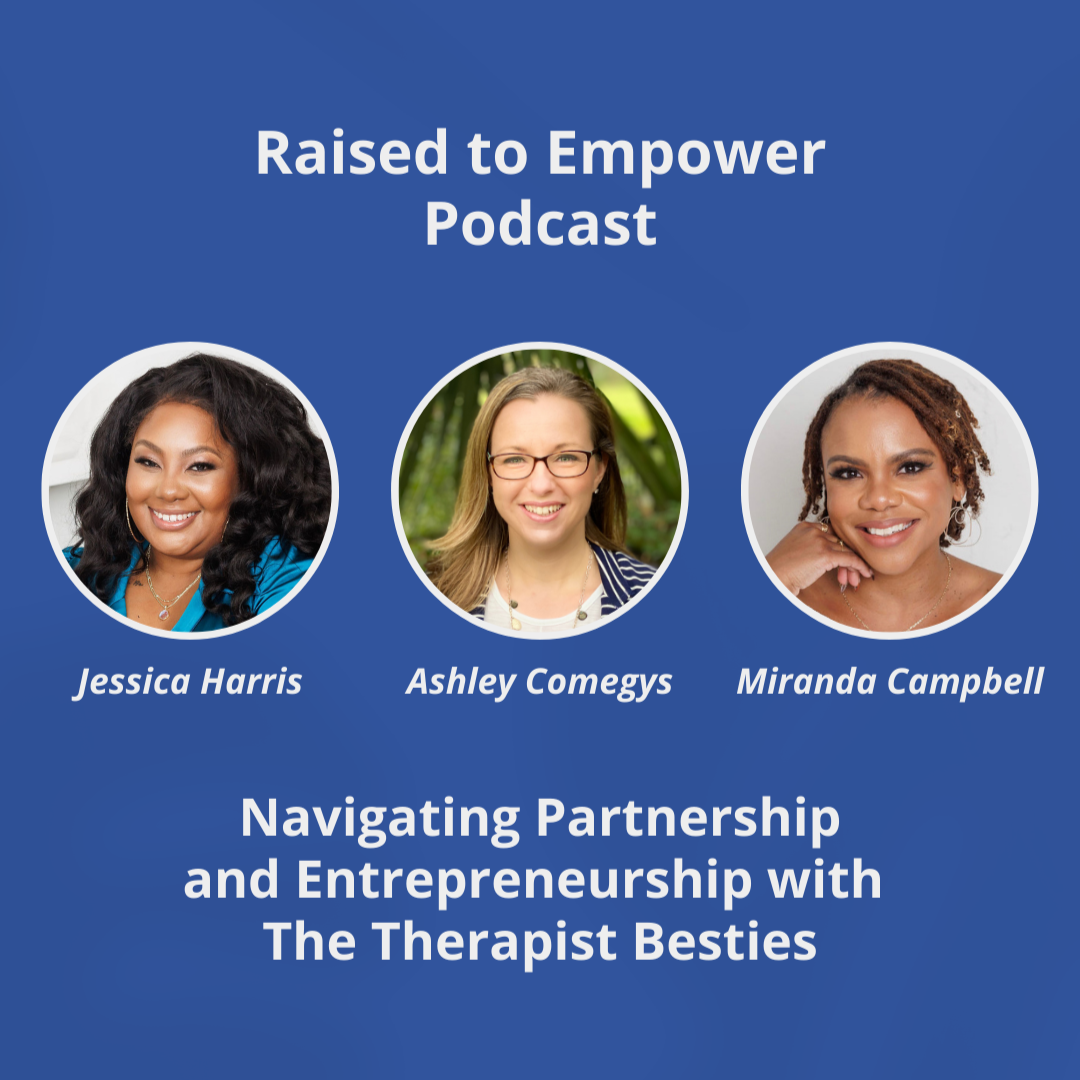
bestie blog

Teaching Attachment Theory with a Cultural Lens
Attachment theory is a foundational concept in counseling and psychology programs, helping students understand how early relationships shape emotional and relational patterns. However, traditional attachment models often fail to account for the deep influence of culture, community, and historical context.

Attachment Theory for Counselors and Leaders: A Shared Foundation
Attachment theory is often associated with childhood experiences and personal relationships. In therapy, it helps clients understand why they connect, avoid, or struggle in relationships—but its impact goes far beyond the therapy room.

3 Ways to Attract Your Dream Clients Without Feeling Salesy
Marketing your therapy practice can feel uncomfortable, especially when it seems like you have to “sell” your services. But here’s the truth—marketing is not about selling; it’s about connection. The right clients are already searching for the support you offer. Your job is to make it easy for them to find you and feel confident reaching out.
If you’ve been struggling to attract your ideal clients without feeling pushy, these three strategies will help you market your practice in an ethical, client-centered way while growing a practice that aligns with your values.

Collaboration Over Competition: The Secret to Thriving in Private Practice
When we first started our private practices, we thought we had to do it all alone. We spent hours tweaking our websites, refining our branding, and figuring out how to market ourselves—all while juggling full caseloads and the emotional labor that comes with being a therapist.

The Rollback of DEI & Attachment Trauma: Why It Hits Deeper Than Policy
The rollback of Diversity, Equity, and Inclusion (DEI) initiatives isn’t just a shift in workplace policy—it’s an emotional rupture that impacts psychological safety, trust, and workplace culture.
For many marginalized communities, DEI was more than just a program; it was a lifeline to belonging, fairness, and representation. Its dismantling reopens deep attachment wounds, triggering emotional responses rooted in historical exclusion, systemic inequities, and past betrayals.
If DEI is being pulled back in your workplace, you may be feeling frustration, uncertainty, or even grief. These emotions aren’t just about the present changes—they are tied to something deeper.

3 Practical Ways Leaders Can Build Emotional Safety on Their Teams
In today’s fast-paced workplace, emotional safety isn’t just a “nice-to-have”; it’s a critical factor for team success. Google’s Project Aristotle, a comprehensive study on high-performing teams, identified psychological safety—a team’s shared belief that it’s safe to take risks—as the most important factor driving performance and innovation.


Attachment Styles Aren’t Just for Relationships: What They Reveal About Your Leadership
When we think of attachment styles, we often connect them to romantic relationships or childhood experiences. But attachment theory doesn’t just apply to our personal lives—it also plays a powerful role in how we lead. Understanding your attachment style can unlock insights into your leadership patterns and their impact on workplace dynamics.

Turnover Is Expensive. Here’s How Secure Leadership Can Save You Thousands
Turnover is more than an inconvenience—it’s a costly, morale-draining issue that can ripple through your entire organization. For every employee that leaves, the financial impact can range from 6-9 months of their salary for mid-level roles to up to 400% of annual pay for high-level or specialized positions.

Balancing Grief and Joy During the Holiday Season: What It Means for Secure Leadership and How to Navigate It
The holiday season is often portrayed as a time of unrelenting joy—glowing lights, cheerful music, and endless celebrations. But for many leaders, especially those striving for emotional intelligence and connection, the holidays bring a mix of gratitude, reflection, and even grief. Balancing these emotions is not just a personal journey—it’s an essential part of secure leadership.

Why Emotional Safety Is the #1 Predictor of High-Performing Teams
Imagine a workplace where your team feels empowered to share bold ideas, tackle challenges head-on, and collaborate without fear of judgment or failure. Sounds ideal, right? It’s also completely achievable—and the key lies in one simple but powerful concept: emotional safety.

A Branding Mistake I’ll Never Forget—and How It Changed My Business
Hi, I’m Miranda, and I want to share a personal story about a branding mistake I made early on. It taught me one of the most valuable lessons I’ve learned in business—and it’s something I hope will help you as you plan for 2025.

The Role of Churches in Reducing Mental Health Stigma in BIPOC Communities
Churches have long been trusted spaces of refuge, healing, and guidance in BIPOC communities. For many, faith leaders are the first point of contact when facing challenges, including those related to mental health. This unique position gives churches the opportunity—and the responsibility—to address mental health stigma and become champions for mental wellness within their communities.
In this blog, we’ll explore the critical role churches can play in reducing mental health stigma and provide actionable strategies for faith leaders to foster open conversations and encourage help-seeking behaviors.

How Organizations Can Promote Employee Well-Being and Prevent Burnout
Burnout is more than a buzzword—it’s a reality impacting employees across industries, with serious consequences for productivity, morale, and retention. For organizations to thrive, they must prioritize employee well-being as a core part of their mission, not just a checkbox on an HR to-do list.
This blog explores the causes of burnout, why addressing it matters, and actionable steps organizations can take to create a culture of wellness and resilience.

Preventing Burnout: Building a Sustainable and Authentic Therapy Practice
For many therapists, private practice is a dream—an opportunity to shape a space that reflects your values and work with clients you’re genuinely excited to help. Yet without thoughtful planning, running a private practice can easily lead to burnout, especially when balancing the demands of marketing, administration, and client work.
Sustainability is key, and authenticity in your approach can make all the difference. When your practice reflects who you are, attracting aligned clients becomes easier, and you’re less likely to feel drained by the work you love.
Here, we’ll dive into some practical, actionable steps for building a sustainable therapy practice that not only preserves your energy but also enables you to serve clients in an authentic and impactful way.

From Generic to Genuine: Write a Directory Profile that Speaks to Your Ideal Clients
Creating an authentic directory profile is essential if you want to stand out and attract clients who resonate with your style and approach. Unfortunately, most profiles read similarly, blending technical language, credentials, and clinical terms. These profiles, while informative, often fail to connect with potential clients in a genuine, relatable way.

Bridging the Gap: Increasing Access to Eating Disorder Care in BIPOC Communities
Eating disorders don’t discriminate—they affect individuals across all racial, ethnic, and socioeconomic backgrounds. Yet, BIPOC (Black, Indigenous, and People of Color) communities face significant barriers to accessing treatment, leading to underdiagnosis, delayed care, and poorer outcomes.
This blog explores the disparities in eating disorder care within BIPOC communities and highlights actionable steps organizations, churches, and mental health professionals can take to create equitable access to treatment.

collaborate like a boss
Networking isn't merely about exchanging business cards or making superficial connections. It's about making meaningful relationships with colleagues, potential clients, and other professionals in complementary fields. So many of us have ambitions of creating a significant impact in what we do, the connections we establish with others makes this easier to actualize if we set some intention around it.

10 things for therapists to consider when transitioning to full time private practice
As a mental health therapists, we've witnessed numerous colleagues embark on the journey of transitioning from a full-time job to running their own private therapy practice. It's a decision laden with excitement, apprehension, and uncertainty. While the prospect of autonomy and flexibility is alluring, the transition requires careful planning, self-reflection, and a solid strategy. In this blog, we'll share insights and tips from our experience to guide therapists through this significant career shift.

Why you must Optimize Your Online Presence with a Google Business Profile…like, today
Creating a Google Business profile is an essential step for mental health therapists for several reasons. Many of the therapists we encounter on therapist-centered Facebook groups talk about needing help with marketing and filling their practices. This is one of the foundational steps we suggest; AND, it’s free!